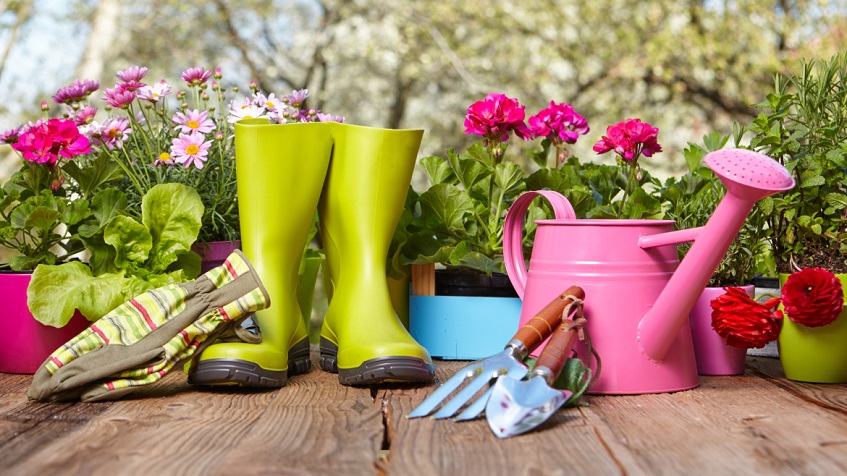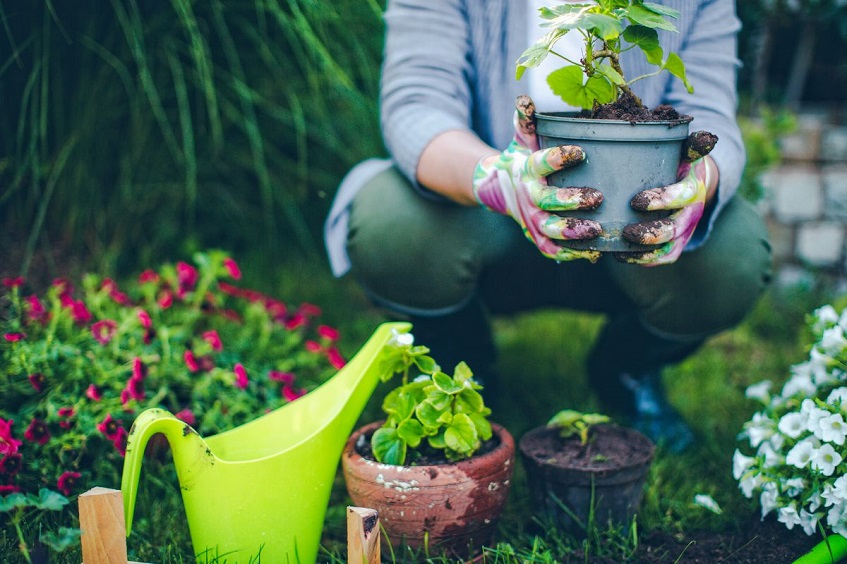
Gardening 101: Essential Tools for Every Green Thumb
Picture stepping into your green oasis at home. The sun warms your skin, a gentle breeze carries the sweet scent of blooming flowers, and the satisfaction of nurturing life with your own hands washes over you. Gardening isn’t just about cultivating beautiful plants, it’s a journey of self-discovery, stress relief, and connection to nature. But before you can transform your backyard into a flourishing paradise, there are a few essential tools to get you started on the right root (pun intended).
Contents
What Do Gardeners Need?

Kneeling Pads
Anyone who’s spent a significant amount of time kneeling in the dirt knows the toll it can take on your knees. That’s why a thick and durable kneeling pad is a non-negotiable for any gardener, especially beginners. It acts as a barrier between your precious knee joints and the unforgiving ground, preventing aches, pains, and fatigue during those long stretches of planting, weeding, and tending to your garden.
When it comes to kneeling pads, there are two main types to consider: gel and foam. Gel pads offer superior comfort and pressure distribution, making them ideal for those with sensitive knees or who plan on spending extended periods kneeling. They conform more closely to your body shape, providing excellent support and reducing stress on your joints.
Foam pads, on the other hand, are generally more lightweight and affordable. They come in various thicknesses, offering a range of comfort levels. While they may not be as plush as gel pads, they still provide a significant improvement over kneeling directly on the ground. The optimal decision depends on your individual preference and financial constraints.
Look for a pad that’s large enough to accommodate both knees comfortably and consider features like a water-resistant surface and a handle for easy carrying. With the right kneeling pad by your side, you can conquer your garden projects with confidence and comfort, allowing you to focus on the joy of nurturing your green haven.
Even if you don’t have knee pain or discomfort, using a kneeling pad can still benefit your gardening experience. It can help prevent future injuries and make tasks like planting and weeding more enjoyable, especially for those with larger gardens or more physically demanding projects.
Remember to take breaks and switch positions frequently while gardening, not just for your knees but for overall good posture and to prevent strain on other muscles. Avoid staying in a crouched or kneeling position for too long, and use your kneeling pad to support other parts of your body as needed.
Gloves
Before you dive into the delightful world of dirt, protecting your hardworking hands is essential. A good pair of gloves acts as your first line of defence against the elements, shielding you from dirt, thorns, blisters, and even the occasional bug bite. Cotton gloves offer basic protection for everyday gardening tasks. Perfect for planting seeds, handling delicate seedlings, or simply keeping your hands clean while weeding, cotton gloves provide a comfortable barrier between your skin and the soil.
Leather gloves offer superior protection, making them ideal for pruning roses, trimming bushes, or handling rough materials like mulch. Their sturdiness shields your hands from thorns, sharp tools, and even the hot summer sun, allowing you to focus on the job at hand without worrying about scratches or blisters.
Hand Tools
A trowel is a must-have for any gardener. Imagine a small, handheld shovel, that’s your trowel! It excels at digging planting holes of various sizes, perfect for transplanting seedlings or tucking in seeds for a vibrant future. Need to scoop up some soil or create furrows for planting? Your trowel’s got you covered.
The hand fork, a multi-talented tool loosens compacted soil, allowing air and water to reach plant roots more easily. It’s also good for airing compost piles to speed up decomposition, and its gentle tines help you lift delicate plants without disturbing their precious root systems. The weeder efficiently pries out weeds by the root, ensuring they don’t return to steal precious resources from your plants. With a trusty weeder by your side, you can maintain a neat garden bed, allowing your desired plants to flourish.
Cutting Tools
As your garden blossoms and thrives, you’ll need tools to keep it looking its best. Enter the world of cutting tools, your companions for shaping and maintaining your flourishing haven. Pruning shears are ideal for tackling smaller stems and branches, making clean cuts that promote healthy plant growth. They’re perfect for deadheading spent flowers to encourage further blooms, trimming herbs for culinary delights, or shaping shrubs to maintain their desired form.
Think of loppers as the bigger, brawnier cousin of pruning shears. Designed for tackling thicker branches that would leave pruning shears feeling defeated, loppers allow you to prune larger shrubs, remove dead or diseased branches from trees, or cut back overgrown perennials.
Watering Can
Imagine a friendly, handheld container specifically designed for delivering water directly to your plants. Watering cans are perfect for delicate seedlings, container plants, or targeting specific areas of your garden that might be feeling a bit dry. The gentle shower from a watering can allows for controlled watering, preventing damage to fragile plants.
Nurturing Your Thriving Garden

Now that you’re equipped with the perfect tools and your green haven is taking shape, let’s discuss some essential elements for fostering a flourishing garden. Just like us, plants need the right foundation to thrive. This starts with the quality of your soil and potting mix.
Potting Mix
Container gardens rely on potting mix to provide essential nutrients, drainage, and support for your plants. Invest in a quality potting mix specifically formulated for the types of plants you’re growing. Avoid using garden soil in containers, as it can become compacted and restrict drainage, leading to root rot.
Garden Soil
Healthy soil is the lifeblood of your in-ground garden. Rich, well-draining soil provides essential nutrients, air, and water for your plants’ roots. If your existing soil is compacted or lacking in nutrients, consider amending it with compost, organic matter, or raised garden beds to create an optimal growing environment.
Takeaway
Gardening is more than just tools. It’s about nurturing life, witnessing the beauty of nature unfold, and reaping the rewards of your hard work. For forgetful gardeners or those with busy schedules, self-watering pots offer a convenient way to keep container plants thriving without constant monitoring. Think of the satisfaction of harvesting homegrown vegetables, the joy of watching vibrant flowers bloom, or the peacefulness of simply tending to your green oasis. Grab your tools, get your hands dirty, and embark on this rewarding journey of transforming your space into a flourishing garden heaven.


No Comments